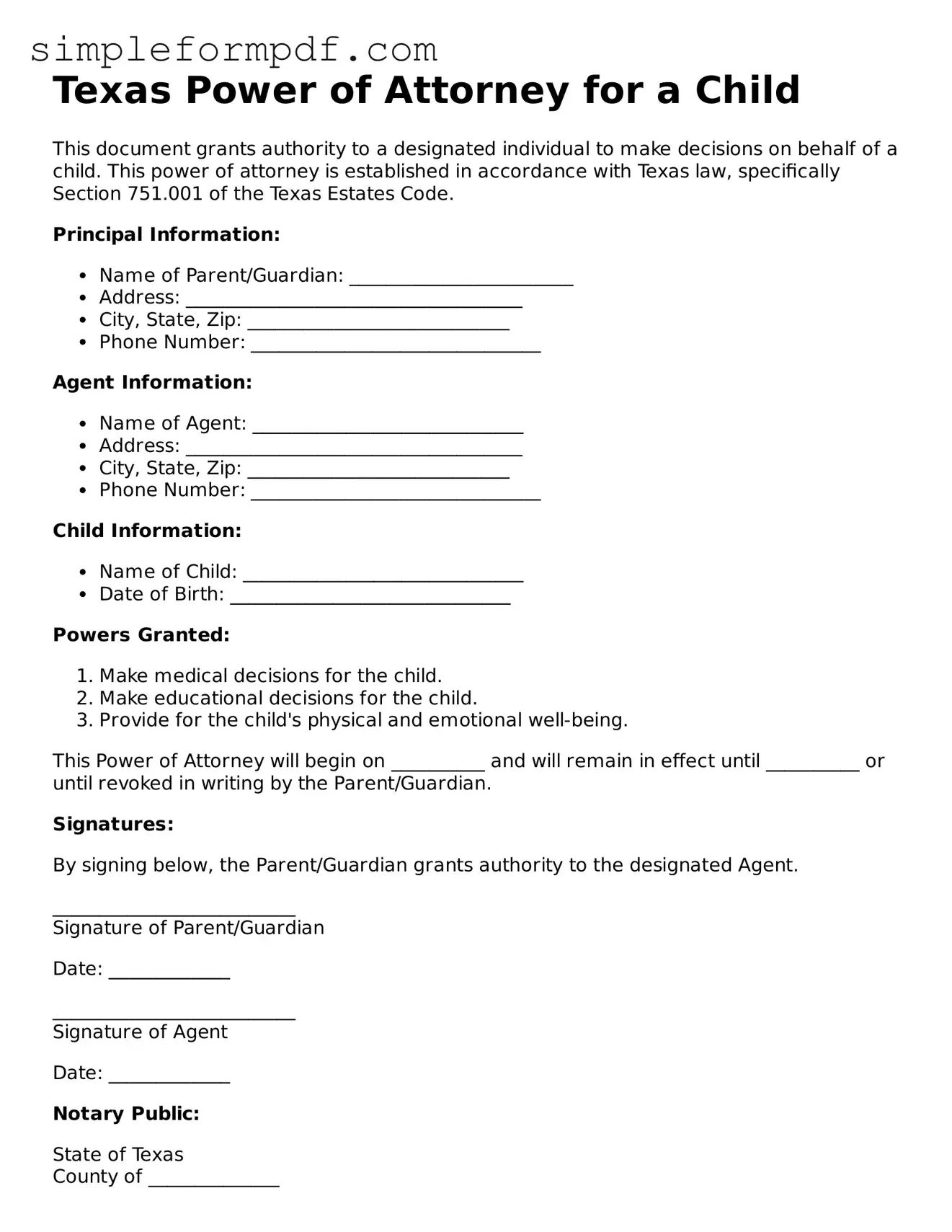Texas Power of Attorney for a Child
This document grants authority to a designated individual to make decisions on behalf of a child. This power of attorney is established in accordance with Texas law, specifically Section 751.001 of the Texas Estates Code.
Principal Information:
- Name of Parent/Guardian: ________________________
- Address: ____________________________________
- City, State, Zip: ____________________________
- Phone Number: _______________________________
Agent Information:
- Name of Agent: _____________________________
- Address: ____________________________________
- City, State, Zip: ____________________________
- Phone Number: _______________________________
Child Information:
- Name of Child: ______________________________
- Date of Birth: ______________________________
Powers Granted:
- Make medical decisions for the child.
- Make educational decisions for the child.
- Provide for the child's physical and emotional well-being.
This Power of Attorney will begin on __________ and will remain in effect until __________ or until revoked in writing by the Parent/Guardian.
Signatures:
By signing below, the Parent/Guardian grants authority to the designated Agent.
__________________________
Signature of Parent/Guardian
Date: _____________
__________________________
Signature of Agent
Date: _____________
Notary Public:
State of Texas
County of ______________
Subscribed and sworn to before me on this ____ day of ____________, 20___.
__________________________
Notary Public Signature
My commission expires: ___________
